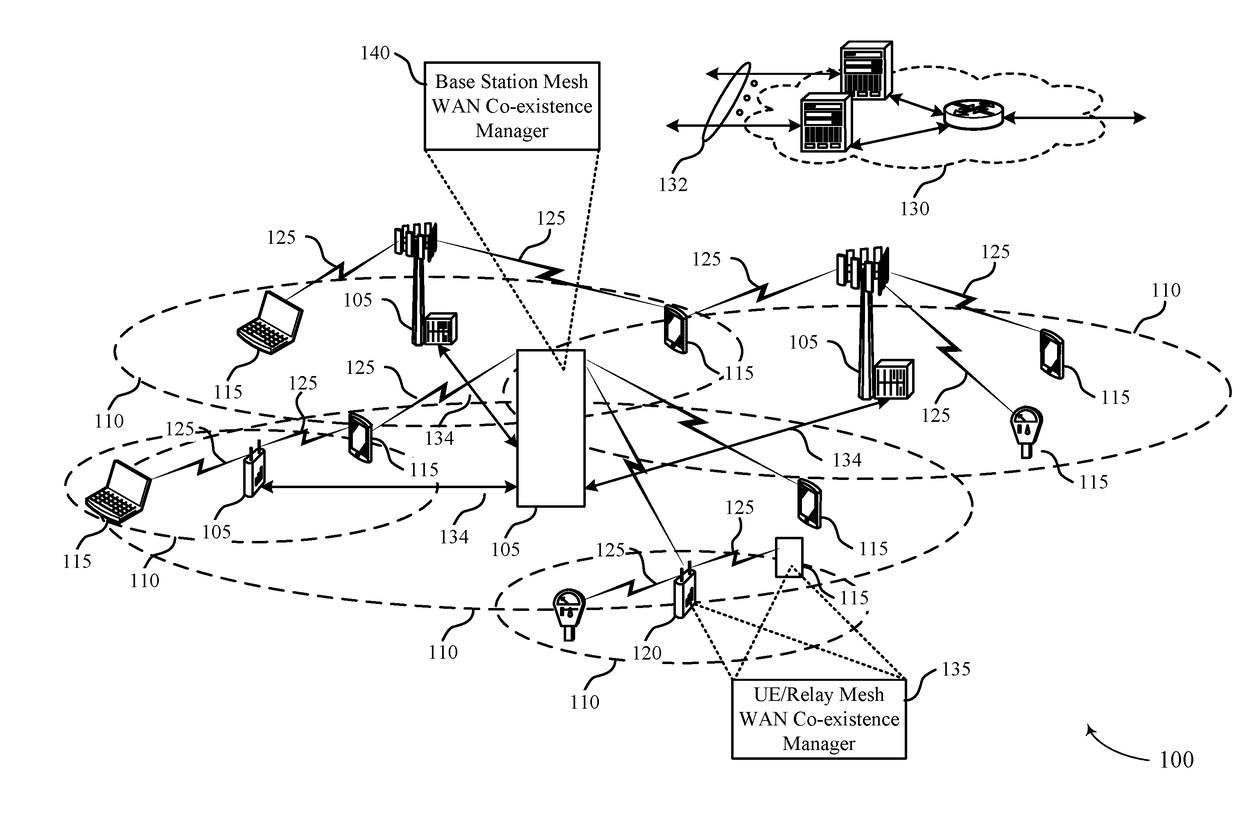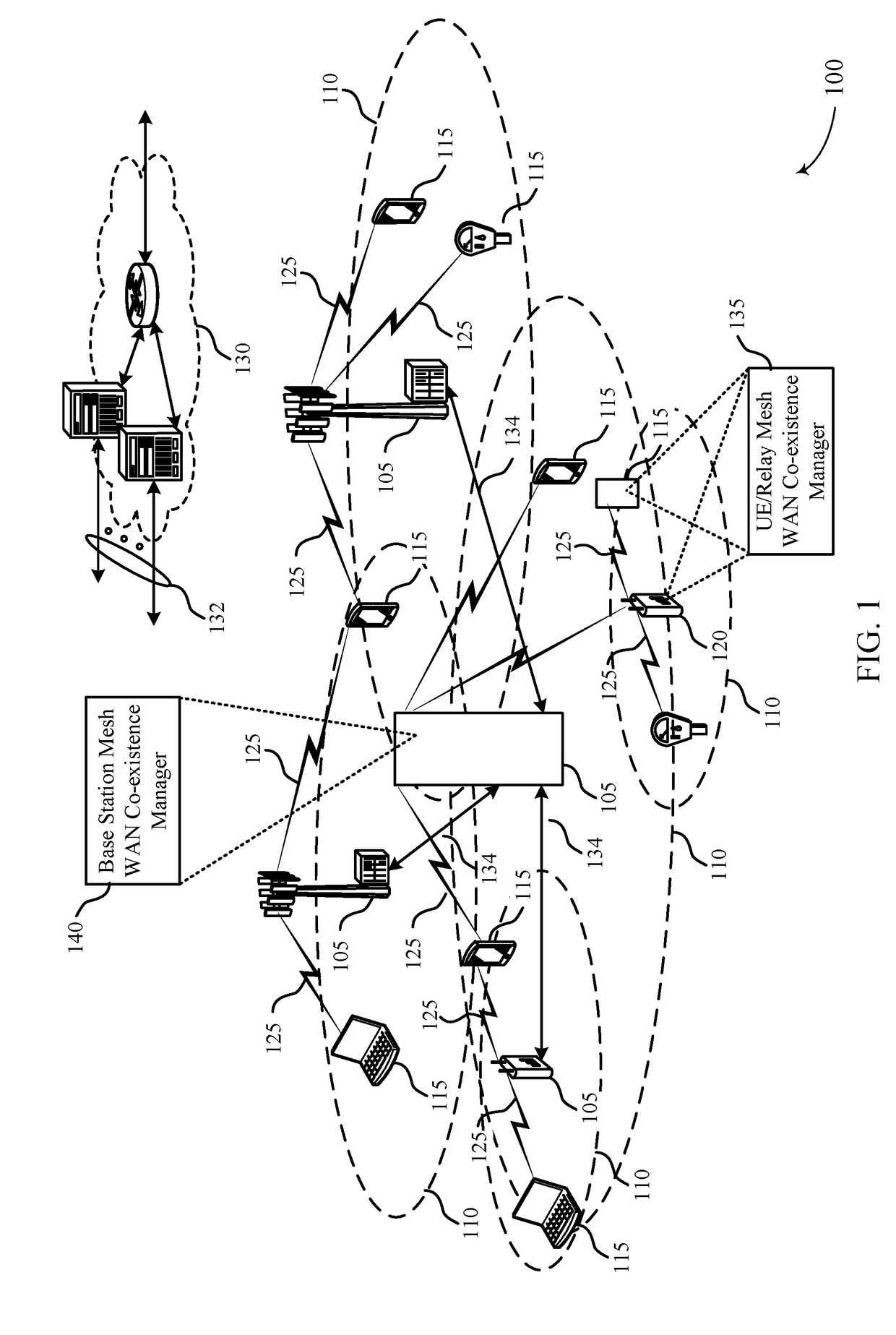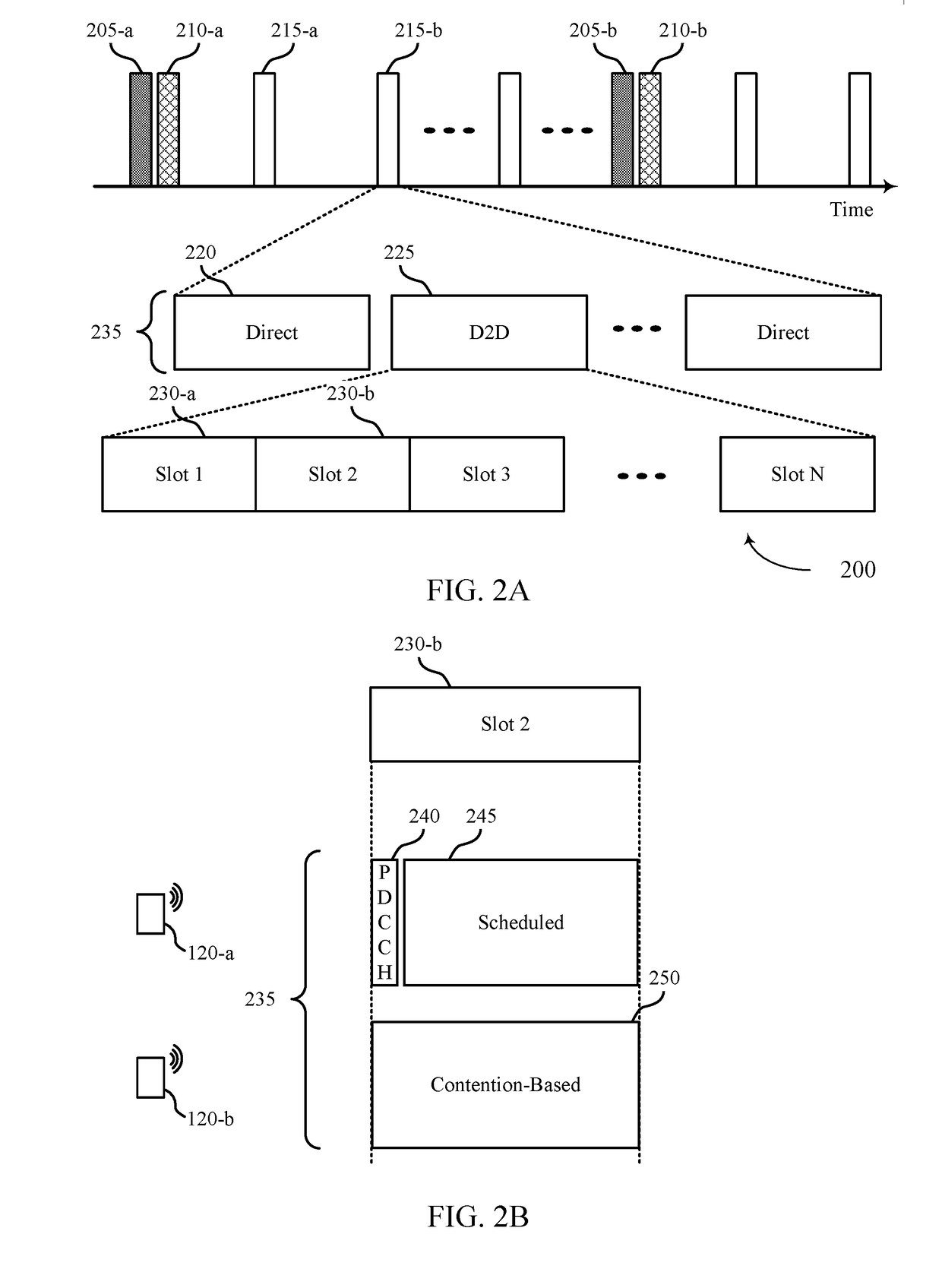Mechanisms for co-existence between communication modes in a mesh wide area network
a communication mode and mesh network technology, applied in the field of wireless communication, can solve problems such as increased interference between ues in the mesh network
- Summary
- Abstract
- Description
- Claims
- Application Information
AI Technical Summary
Benefits of technology
Problems solved by technology
Method used
Image
Examples
Embodiment Construction
[0043]Mechanisms for co-existence between different communication modes implemented in a wireless network may be used to decrease interference between wireless devices in the wireless network. For example, a wireless device (e.g., a UE) in a location with poor wireless communication coverage may use other wireless devices (e.g., relays) to indirectly communicate with a central node (e.g., a base station) in a mesh WAN. Communications between a relay and an associated UE, or between a first relay and a second relay, may be referred to as D2D communications. In some examples different communication modes may be used to perform D2D communication in the mesh WAN. For example, relays may provide distributed scheduling by scheduling associated UEs and / or other relays for communications, or the UEs and / or other relays may communicate with the relay using contention-based protocols (e.g., request-to-send (RTS) / clear-to-send (CTS)).
[0044]In some examples, wireless devices using one D2D commu...
PUM
 Login to View More
Login to View More Abstract
Description
Claims
Application Information
 Login to View More
Login to View More - R&D
- Intellectual Property
- Life Sciences
- Materials
- Tech Scout
- Unparalleled Data Quality
- Higher Quality Content
- 60% Fewer Hallucinations
Browse by: Latest US Patents, China's latest patents, Technical Efficacy Thesaurus, Application Domain, Technology Topic, Popular Technical Reports.
© 2025 PatSnap. All rights reserved.Legal|Privacy policy|Modern Slavery Act Transparency Statement|Sitemap|About US| Contact US: help@patsnap.com



